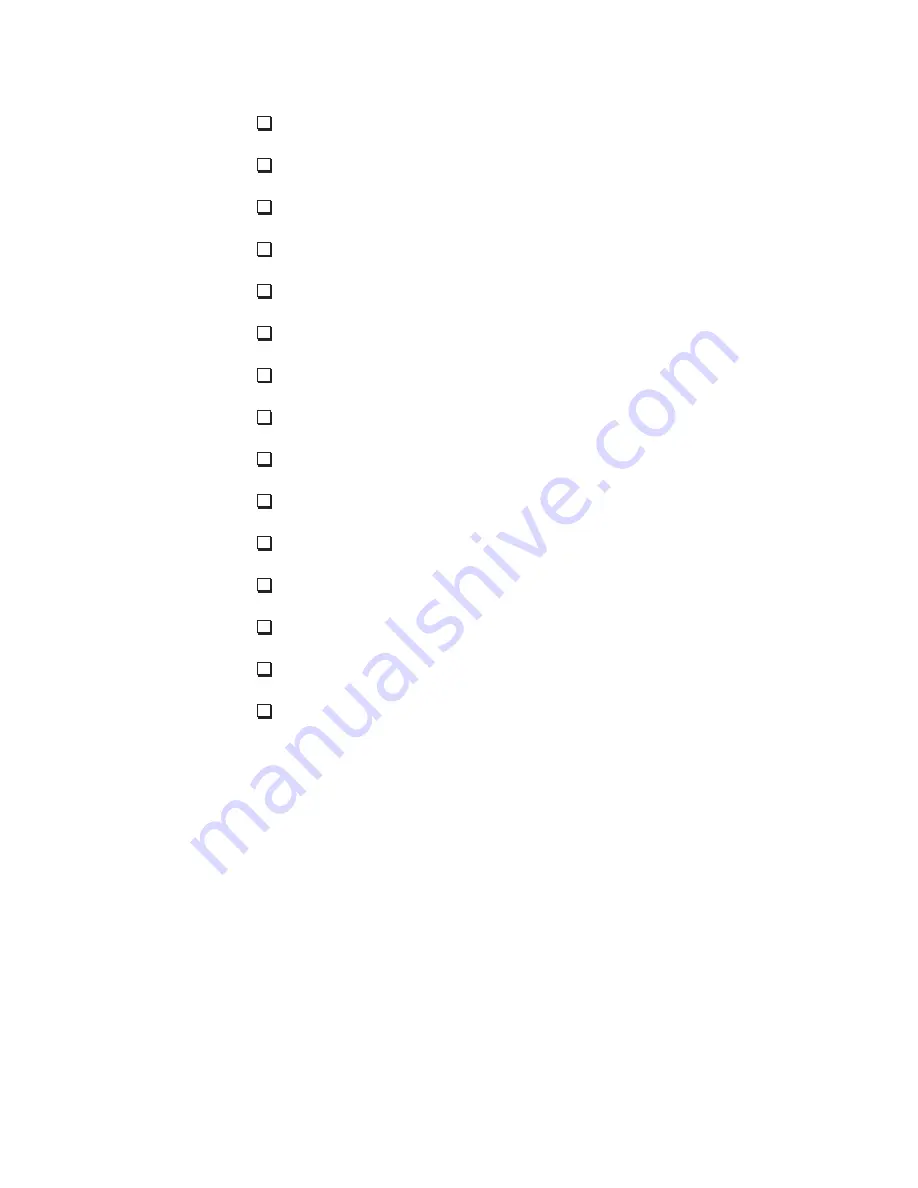
14
9
OPERATIONAL START-UP CHECKLIST
Foundation level and baseplate grouted.
Foundation bolts tight.
Motor and pump mounting bolts tight.
Suction and discharge connections secure.
Flush piping installed if required.
Electrical connections secure and covered.
Turn motor shaft by hand, ensure that it does not bind.
Jog motor/Check rotation.
Ensure seal is properly flushed.
Suction valve is open, Discharge valve is slightly open.
Ensure that pump is primed.
Start pump and open discharge valve to desired flow rate.
Check flush water flow and pressure.
Check for excessive vibration.
Check mechanical seal for no leaks after run-in.
geNeral
The Fybroc pump is designed for easy inspection
and service because of its back pullout construc-
tion. For inspection or replacement of certain
parts, the work can be done in place, without the
necessity to remove the complete pump to a
maintenance area. Refer to applicable Sectional
Drawing in this manual for item numbers
mentioned below.
Before any work is done the following procedures
and precautions should be taken:
1) The electric motor should be either disconnected
from its power source, or the switch or circuit
breaker must be secured in an “off ” position so
that the motor cannot be accidentally started.
2) Depending upon the fluid being pumped, the
proper protective equipment should be worn
(gloves, mask, respirator, goggles or safety
glasses, etc.) to prevent contact with the fluid
in the pump or pipelines.
3) Check the valves on the suction and discharge
lines to be sure they are closed and secured.
4) If the mechanical seal is flushed from an exter-
nal source, turn off the valve in the supply line
and disconnect the flush line.
5) The liquid trapped in the pump and piping should
be drained. Care should be taken to either trap
the fluid in a container or to divert it to a proper
disposal area so that the area around the pump
and base will not be contaminated.
disassembly
1) If the complete pump is to be removed to a
maintenance area, remove the bolts holding
the motor and casing to the baseplate. Remove
the bolts on the suction and discharge flange
connections. Now the whole pump can be
removed. If the casing is to be left in place
remove the screws holding the motor to the
baseplate and then remove the casing bolts,
nuts, washers and shims securing the casing
to the cover and motor adapter (Items 1C,
1D, 1E, 67). Now the rotating assembly can
be pulled away from the casing and removed.
Note the number of shims removed. Two
jackscrews (Item 19D) are provided to
ease disassembly.
2) If the casing was removed with the pump,
remove the casing bolts, nuts, washers and
shims securing the casing to the cover and
frame adapter (Items 1C, 1D, 1E, 67). The
rotating assembly can be pulled away from
casing. Note the number of shims that were
removed. Two jackscrews (Item 19D) are
provided to ease disassembly. Now the pump
can be placed in a convenient location to
disassemble it.
3) Remove the cover o-ring (Item 73) and place in
a container with the casing hardware.
4) To disassemble the impeller assembly, remove
the locking ring (Item 14 B) by removing the
two Allen head screws, thus exposing the
segment key (Item 14A), which can now be
removed from the impeller sleeve.
5) If the pump is provided with a mechanical seal
utilizing set screws to drive the seal, loosen the
set screws. If the mechanical seal is of the
preset outside type, reinstall the seal setting
clips, prior to loosening the set screws.
6) Remove rear fan cover from motor; use vise
grips or pipe wrench to hold rear motor shaft
extension from turning. Remove fan if required.
Do not attempt to hold fan. The impeller
assembly can now be removed by turning the
impeller in a counter-clockwise direction facing
the impeller. A strap wrench or similar device
may be required to disengage the screw
threads. The impeller, stuffing box cover, and
seal can now be removed as a unit.
7) If the mechanical seal is a single outside seal
be sure the set screws are loose and pull the
rotary seal assembly off the sleeve, using a
twisting motion as it is removed. The impeller
(Item 2) can be removed from the cover.
Remove the four bolts and washers (Item 17C,
17E) securing the gland (Item 17) to the cover
(Item 11) and remove the gland and then the
seal stationary from the cover. The carbon and
ceramic elements of the seal should be handled
carefully to prevent chipping or scratching.
ASSEMBLY/ DISASSEMBLY PROCEDURES FOR HORIZONTAL PUMPS








































